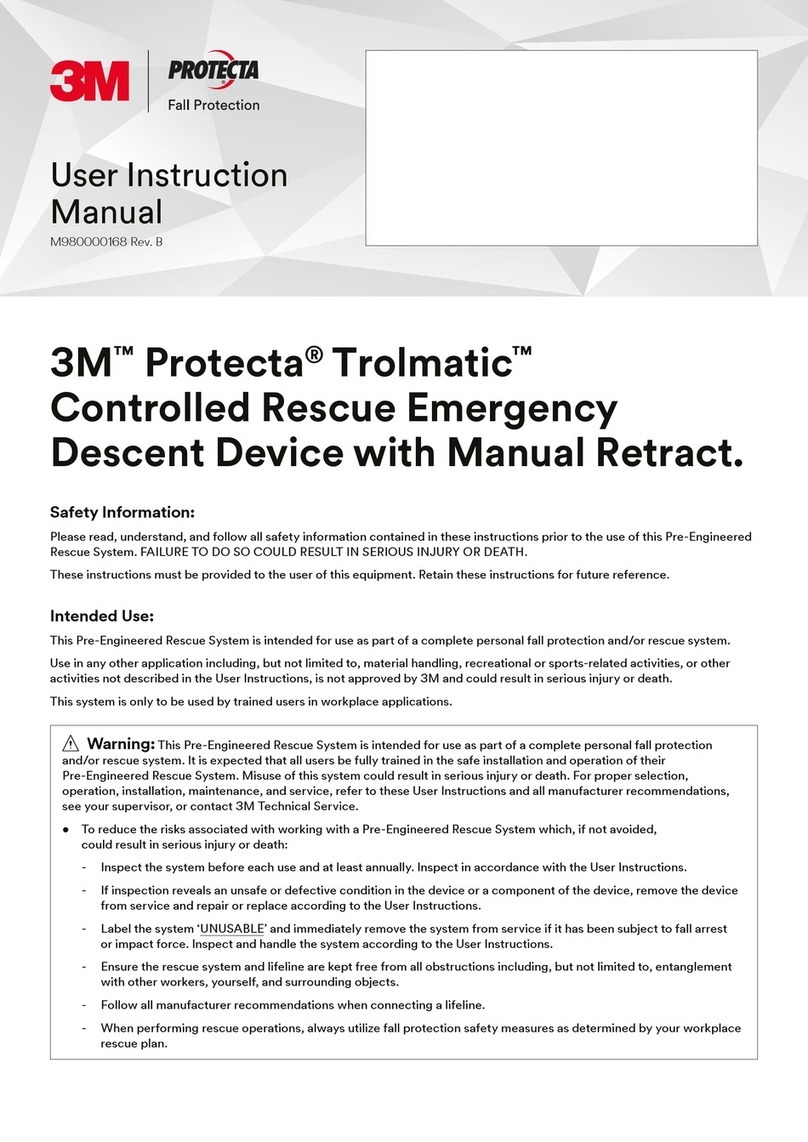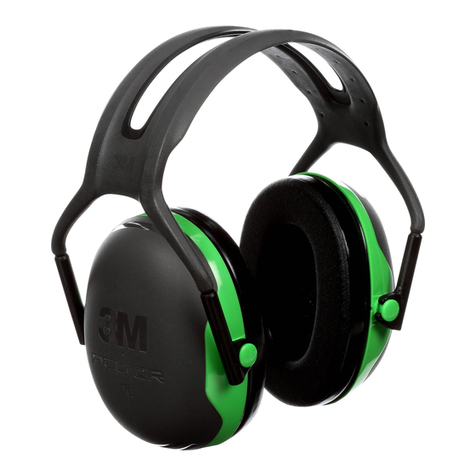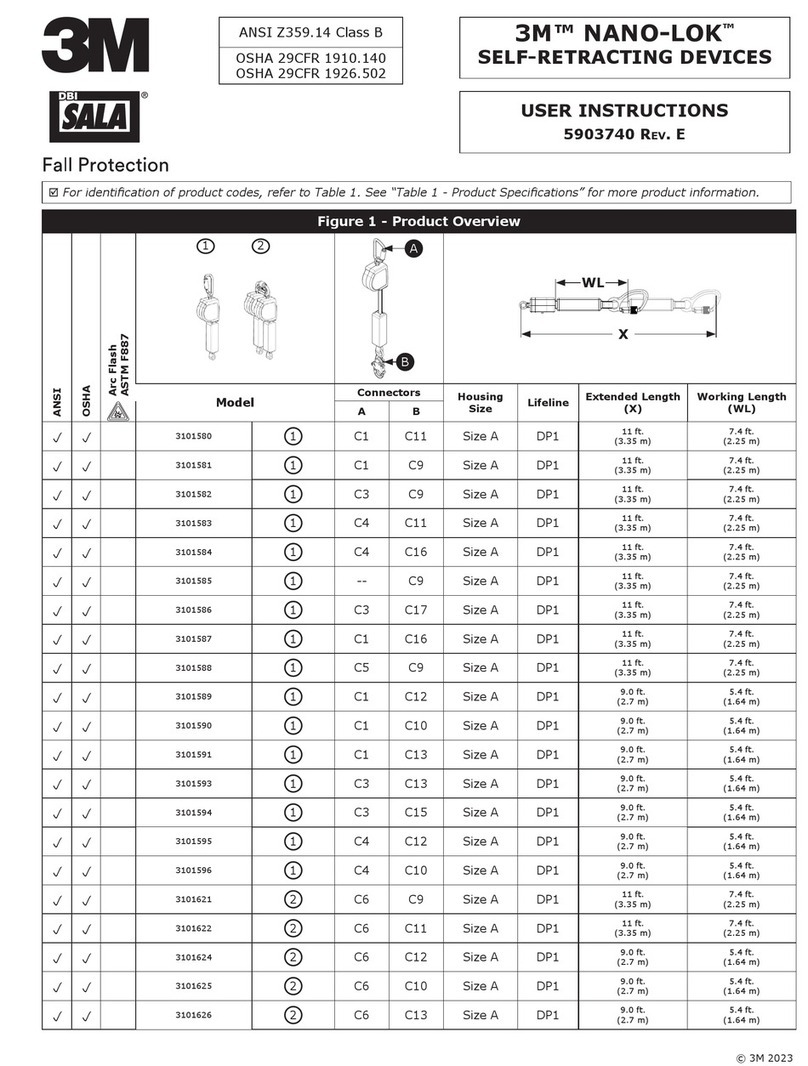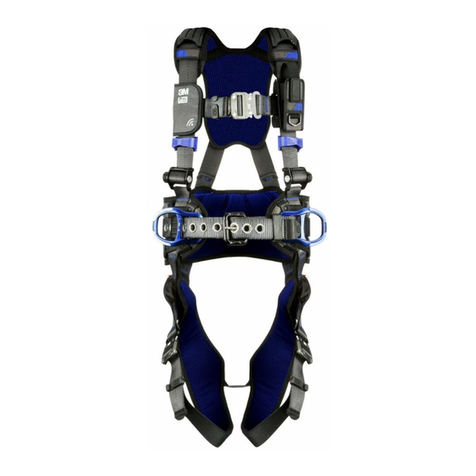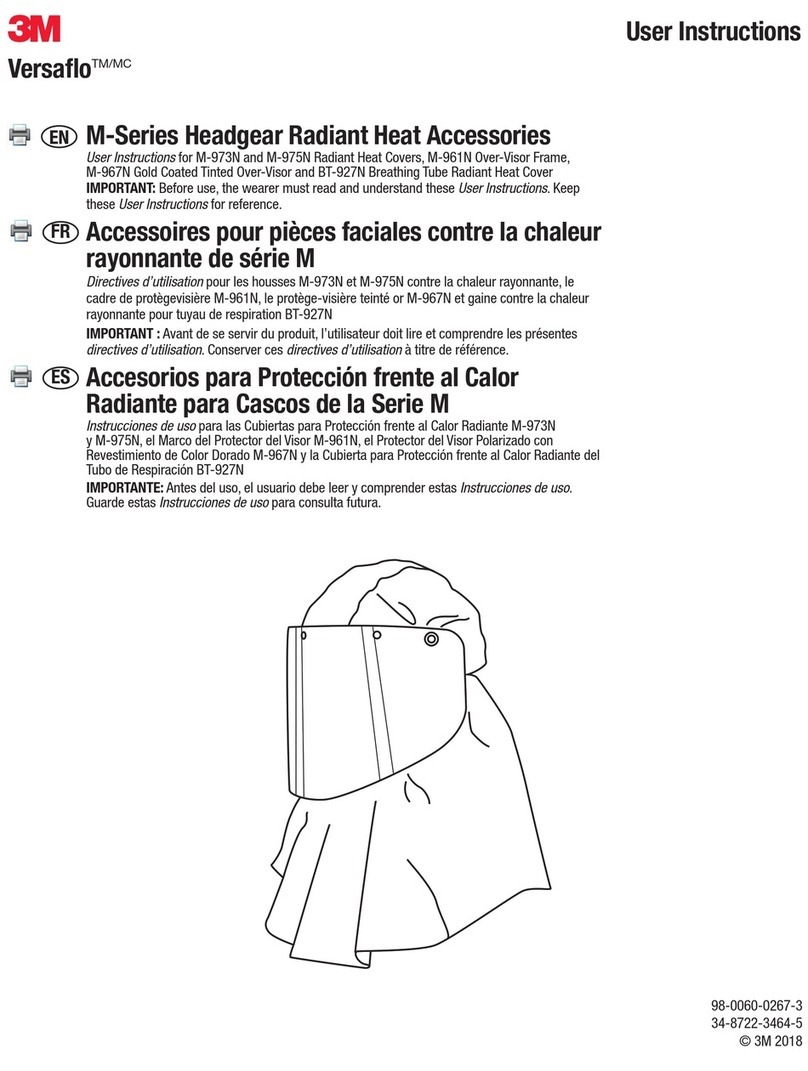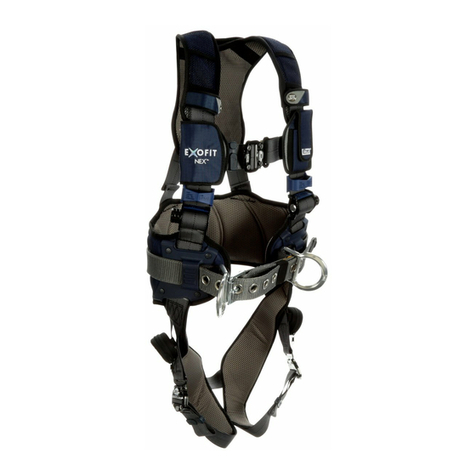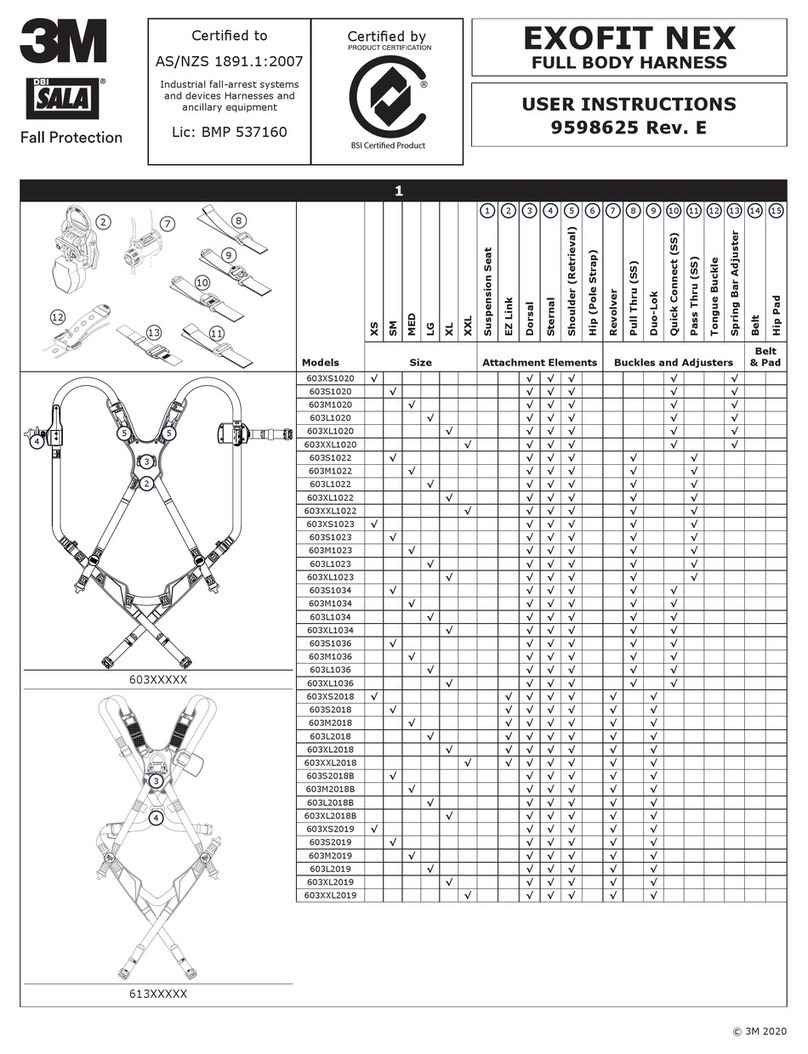
4
1.0 APPLICATIONS
1.1 PURPOSE: Capital Safety Self Retracting Lifelines (SRLs) are designed to be a component in a personal
fall arrest system (PFAS). Figure 1 illustrates SRLs covered by this instruction manual and their typical
applications. They may be used in most situations where a combination of worker mobility and fall protection
is required (i.e. inspection work, general construction, maintenance work, oil production, conned space
work, etc.).
1.2 STANDARDS: Your SRL conforms to the national standard(s) identied on the front cover of these
instructions. Refer to local, state, and federal (OSHA) requirements governing occupational safety for
additional information regarding Personal Fall Arrest Systems.
1.3 TRAINING: This equipment is intended to be used by persons trained in its correct application and use. It is the
responsibility of the user to assure they are familiar with these instructions and are trained in the correct care and use
of this equipment. Users must also be aware of the operating characteristics, application limits, and the consequences of
improper use.
2.0 LIMITATIONS & REQUIREMENTS
Always consider the following limitations and requirements when installing or using this equipment:
2.1 CAPACITY: SRLs are designed for use by one person with a combined weight (person, clothing, tools, etc.)
not exceeding 420 lbs (190 kg).
At no time shall more than one person connect to a single SRL for fall arrest applications.
2.2 MAXIMUM ARREST FORCE AND MAXIMUM ARREST DISTANCE: SRLs documented in this instruction meet
the following Arrest Force and Arrest Distance maximums:
Weight of Worker Up to 310 lbs (141 kg) Greater than 310 lbs (141 kg) Up to 420 lbs (191 kg)
Average Arresting Force 900 lbs (4.0 kN) 900 lbs (4.0 kN)
Maximum Arresting Force 1,350 lbs (6.0 kN) 1,350 lbs (6.0 kN)
Maximum Arrest Distance 30 in (0.76 m) 36 in (0.9 m)
2.3 ANCHORAGE: Anchorages selected for fall arrest systems shall have a strength capable of sustaining static
loads applied in the directions permitted by the system of at least:
1. 5,000 lbs. (22.2 kN) for non-certied anchorages, or
2. Two times the maximum arresting force for certied anchorages.
When more than one fall arrest system is attached to an anchorage, the strengths set forth in (1) and (2)
above shall be multiplied by the number of systems attached to the anchorage.
2.4 RESCUE PLAN: When using this equipment, the employer must have a rescue plan and the means at hand
to implement it and communicate that plan to users, authorized persons, and rescuers.
2.5 INSPECTION FREQUENCY: The SRL shall be inspected by the user before each use and, additionally, by
a competent person
1
other than the user at intervals of no more than one year
2
. Inspection procedures are
described in the “Inspection Checklist” (Table 1). Results of the Competent Person inspection should be
recorded in the “Inspection and Maintenance Log” on the back pages of these instructions or recorded with the
i-Safe™ system (see Section 5).
2.6 LOCKING SPEED: Situations which do not allow for an unobstructed fall path should be avoided. Working
in confined or cramped spaces may not allow the body to reach sufficient speed to cause the SRL to lock if a
fall occurs. Working on slowly shifting material, such as sand or grain,may not allow enough speed buildup
to cause the SRL to lock. A clear path is required to assure positive locking of the SRL.
2.7 NORMAL OPERATIONS: Normal operation will allow the full length of the lifeline to extend and retract
with no hesitation when extending and no slack when retracting as the worker moves at normal speeds. If a
fall occurs, a speed sensing brake system will activate, stopping the fall and absorbing much of the energy
created. For falls which occur near the end of the lifeline travel, a reserve lifeline system or Load Indicator
has been incorporated to assure a reduced impact fall arrest. If the SRL has been subjected to fall forces, it
must be taken out of service and inspected (see Section 5). Sudden or quick movements should be avoided
during normal work operation, as this may cause the SRL to lock up.
2.8 FREE FALL: When anchored overhead, SRLs will limit the free fall distance to 2 ft. (61 cm) or less. To avoid
increased fall distances, anchor the SRL directly above the work level. Avoid working where your lifeline may
cross or tangle with that of another worker. Avoid working where an object may fall and strike the lifeline;
resulting in loss of balance or damage to the lifeline. Do not allow the lifeline to pass under arms or between
1 Competent Person: One who is capable of identifying existing and predictable hazards in the surroundings or working conditions which are unsanitary,
hazardous, or dangerous to employees, and who has authorization to take prompt corrective measures to eliminate them.
2 Inspection Frequency: Extreme working conditions (harsh environments, prolonged use, etc.)may require increasing the frequency of competent person
inspections.

